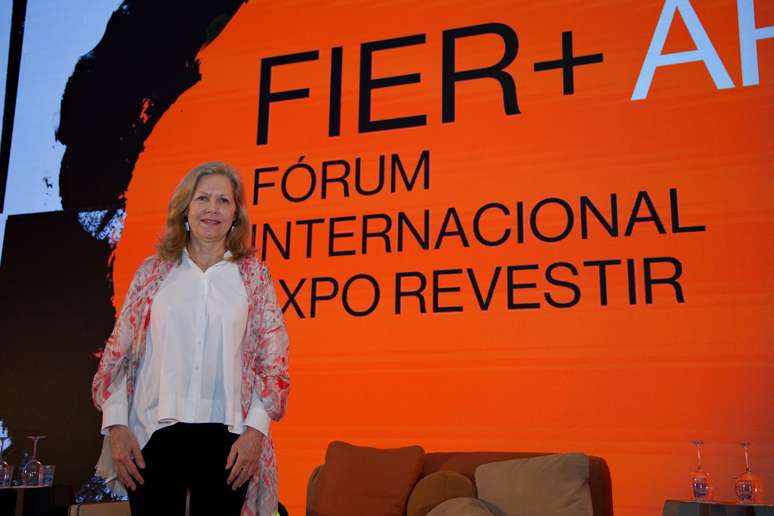Thorne is currently on the international jury for the ArcVision Awards. Take part in FIER+ (Expo Revestir International Forum)
html[data-range=”xlarge”] figure image img.img-b7e029f9ed3858c421535606a7015653zto93umk { width: 774px; height: 516px; }HTML[data-range=”large”] figure image img.img-b7e029f9ed3858c421535606a7015653zto93umk { width: 548px; height: 365px; }HTML[data-range=”small”] image figure img.img-b7e029f9ed3858c421535606a7015653zto93umk, html[data-range=”medium”] figure image img.img-b7e029f9ed3858c421535606a7015653zto93umk { width: 564px; height: 376px; }
Expo Revestir invites professionals from the fields of architecture, decoration and the arts to give lectures to the public every year. One of the guests of FIER+ (Expo Revestir International Forum), promoted by Anfacer, is Martha Thornewho led the executive direction of the Pritzker Architecture Prize (Pritzker Prize).
A graduate of the State University of New York with a BA in urban planning and a master’s degree in urban planning from the University of Pennsylvania, Thorne currently sits on the international jury for the ArcVision: Women and Architecture award, which honors architects who have excelled in the segment, and is the dean of the IE School of Architecture and Design in Madrid and Segovia, Spain.
Watch the interview she gave to Casa.com.br!
As a former Executive Director of the Pritzker Architecture Prize, what do you think are the most important characteristics that architects and designers should have today?
The needs of architecture and the role of architects are in a time of transition. The impact of climate change, rapid urbanisation, technology, migration, housing demand and health and well-being concerns have direct implications for our built environment.
Therefore, architecture must not only design beautiful, functional and meaningful environments, but must also answer these broader questions in a real way. Architects can no longer consider themselves professionals only to create beautiful objects, they must also become leaders in transforming architecture to respond to the social challenges we all face.
We are emerging again after two long years facing the covid-19 pandemic. What do you think has changed in terms of challenges and the social role of architecture and design?
The pandemic has meant that we spend more and more time indoors and often have to use our homes for multiple functions. This highlighted the connection of interior space to our health – physical, mental and emotional – and showed us the need for flexible spaces that can adapt to many different functions.
So this means that when designing new spaces (and adapting existing ones), we need to consider even more parameters if we are to create truly people-centric spaces.
Considering your academic training in Arts and Urban Planning, what kind of connections can we establish today between Art and the city?
We know that cities are much more than a collection of buildings where people live and work. Cities are a reflection of our non-rural societies, where we hope people can come together to best grow and develop. Cities are places of education, innovation, economic development, diversity, culture, collective efforts, governance and, I believe, our hopes for the future.
Art, in all its manifestations, gives life to cities and helps us connect with each other, our past and our future. Art, whether it’s a square, a festival, a museum, nature in the city or urban artistic expressions, all help us form a collective memory and feel that we belong to a place. All interventions in the urban environment must therefore also be evaluated in terms of their contribution to the culture of the city.
What role do you think art, architecture and design should play in today’s complicated world (with wars, poverty and sustainability issues)?
Art has often been thought of as the creative expression of a single person, while architecture and design have traditionally been thought of as the creation of projects – large and small – for particular activities and purposes. I see these three camps can and should be closer together today.
Art has always had the power to communicate. It can respond to societal challenges and remind us of our humanity. Just as architecture and design must move beyond functional and disposable initiatives to be aware of their impact and responses to societal challenges, architecture and design, like art, can express our cultures and our humanity.
Brazil has a vast territory with a great diversity of cultures, urban centers and economic realities. For the last question, I would like to know if you can share your thoughts on Brazilian architecture, cities and arts.
Brazil is a country with enormous potential and great wealth: territory, resources, diversity, industries and people. General goals about the environment, sustainable paths for the future and the need for social justice and equality can and should be implemented using different strategies depending on the specific place.
As a large and “young” country, I have always witnessed exciting talent and energy in Brazilian architecture, the arts and cities. This energy and talent must be sustained and embraced as one of the country’s most exciting natural assets. I keep an eye out for Brazilian architects, designers and artists as they show us new and exciting approaches.
Martha Thorne
Honored FRIBA Honored COAM
Distinguished Professor IE School of Architecture and Design
Senior Adviser of the OBEL Award
Source: Terra
Ben Stock is a lifestyle journalist and author at Gossipify. He writes about topics such as health, wellness, travel, food and home decor. He provides practical advice and inspiration to improve well-being, keeps readers up to date with latest lifestyle news and trends, known for his engaging writing style, in-depth analysis and unique perspectives.





![A Better Life Preview: What’s in store for Wednesday, October 22, 2025 Episode 447 [SPOILERS] A Better Life Preview: What’s in store for Wednesday, October 22, 2025 Episode 447 [SPOILERS]](https://fr.web.img5.acsta.net/img/f8/43/f843493759d61370dcef713a987b0620.jpg)
-1ji50mecs3jg9.jpg)

